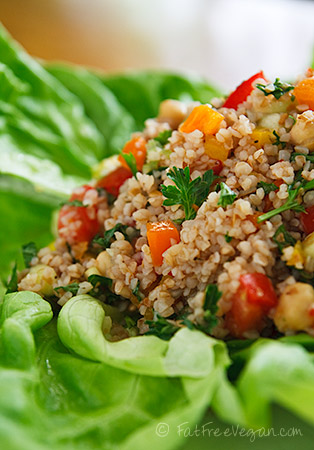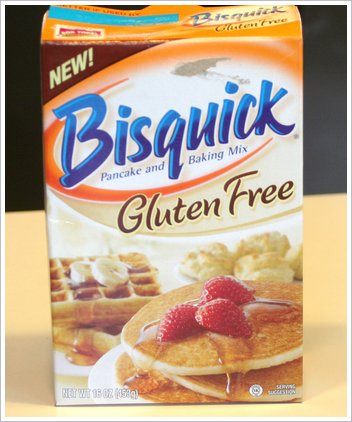October 2010 Issue
Thanksgiving, Gluten Free and Satisfying — Safe and Healthful Foods for Clients
By Lenora Dannelke
Today’s Dietitian
Vol. 12 No. 10 P. 8
“Thanksgiving is one of the easiest meals for people with celiac disease, as long as you’re doing everything fresh,” says Frank Baldassare, a gluten-free/allergy-friendly lifestyle authority and host of the online cooking show The Missing Ingredient (http://www.themissingingredienttv.com/), who has firsthand experience living without gluten. And for clients with celiac disease, a worry-free meal provides a great reason to be thankful.
“Turkey is turkey”
Before you add seasonings, stuffing, and sides, the main ingredient in a Thanksgivinning meal is naturally gluten-free.. .tukey.
- Some conventional turkeys are pre-basted and there can be gluten in that basting.
- Solution: buying a free-range or organic turkey, some of the kosher turkeys will state on the label that there’s no gluten.
- Check the ingredient list on a commercial turkey.
Evelyn Tribole, MS, RD, an award-winning RD and author with a nutrition counseling practice in Newport Beach, Calif., is familiar with unexpected problems that can arise.
Tribole recommends planning as an essential ingredient of a successful holiday meal. “It can be very easy and very doable if you go over everything ahead of time.
- Hidden sources are an issue,” she says, citing wheat-based soy sauce used in a marinade or glaze as an example.
- “Another issue—a big one—is cross-contamination.” To illustrate how easily this occurs, Tribole says simply placing a dinner roll on a plate and removing it may result in cross-contamination. Even minuscule amounts of ingredients with gluten on a kitchen prep surface, cutting board, or a cook’s hand can also contaminate other foods.
“The FDA’s legal definition of gluten free is 20 parts per million. To give you a visual, that’s one tiny speck of crumb in a bread,” Tribole says.
The Right Stuff(ing)
“The easiest way to make gluten-free stuffing—and to stretch food dollars in a bad economy—is to hold onto the heels of your gluten-free bread and put them in a bag in the freezer,”
- To make the stuffing, toast the bread directly on an oven rack until [its] brown and dry, break into small cubes, and season with salt, pepper, and fresh herbs.
- These croutons are then ready to go into your favorite bread-stuffing recipe.
For optimal safety, guests with celiac disease should ask the host to bake the stuffing outside the bird.
Other grains can be substituted for stuffing.
- To ensure oats are safe, stick with designated gluten-free products such as those made by Bob’s Red Mill.
- Kasha, a kind of buckwheat that a lot of kosher people eat, is gluten free and prepared in a gluten-free environment, so you could use that.
- Quinoa, a great grain with a nutty flavor and a texture like couscous, is a perfect substitute for stuffing.
- Prerinsed quinoa eliminates the step of washing a naturally occurring film from the grain.
- You can doctor it with dates and nuts and seasonal flavors
- Rice. Lundberg (a brand—all certified gluten free)—elevates rice stuffing to gourmet fare.
 |
| Kasha (with vegetables) |
| Quinoa |
Sides
Freshly prepared side dishes afford the most control of ingredients.
- Cranberry sauce: Buy some cranberries, boil them in water, add a little tangerine or orange juice and honey, and you’ve got homemade cranberry sauce
- Canned cranberry sauce in itself could be fine, but you have to be careful about where it’s manufactured. If the plant processes wheat products, cross-contamination can occur.
- Traditional green bean casseroles contain glutens. Those crunchy onions on top are made with flour. And if canned soup is used, that has flour, too,” says Tribole.
- A homemade version, prepared with heavy cream and topped with crisped shallots, supplies a sophisticated substitute.
- Gravy and sauces usually thickened with flour may be prepared with cornstarch or rice flour, or look for gluten-free mixes made by Road’s End Organics and Maxwell’s Kitchen.
- Whole Foods Market carries an extensive selection of gluten-free products, and a recently debuted gluten-free version of Bisquick will put biscuits on the Thanksgiving table.
 |
Pie and Dessert
The crust.
- Frozen gluten-free crust or mix, prepare the crust with almond flour, or watch the kosher episode of The Missing Ingredient for a fabulous quinoa tart crust recipe.
- Guests with celiac disease can also ask their host to pour a serving of pumpkin filling into a custard cup.
- The regular pie and the crustless pie can be baked together in the oven as long as they do not touch.
- Eating only the filling from a wheat crust is not considered safe for those on a gluten-free diet.
- “When the knife cuts through the crust and is pulled up through the filling, the pie is contaminated,” says Tribole.
Try some alternate desserts, although they may be nontraditional desserts you can use traditional and seasonal ingredients such as pears and apples.
Offer to bring something. Dishes you bring may be nontraditional at first, however, over time they will become traditional to your family's Thanks Giving. My brother always makes chocolate pudding pies (not gluten-free) for the Newmark's Thanks Giving and they are always a big hit.
Wild Rice Stuffing With Pine Nuts, Dried Cranberries, and Fresh Herbs
 |
Courtesy of Evelyn Tribole, MS, RD
Yields 10 servings
This is the very first gluten-free Thanksgiving stuffing Tribole created after her son was diagnosed with celiac disease, and she notes, “It’s quite tasty!”
Ingredients
- 2 cups wild rice
- 2 cups vegetable or chicken stock
- 1/2 cup pine nuts
- 3/4 cup dried cranberries
- 2 T olive oil, divided
- 2 large ribs celery, finely chopped
- 2 large carrots, finely chopped
- 1 onion, finely chopped
- 1 T fresh thyme leaves
- 1 T minced fresh sage
- 1/2 cup minced parsley
- Freshly ground pepper
- Combine rice and stock in a saucepan and add 2 cups of water. Bring to a boil over medium-high heat. Reduce heat to a simmer, partially cover, and cook, stirring occasionally, until rice is tender, about 40 minutes. (Not all of the liquid will be absorbed.)
- Meanwhile, place a small, heavy skillet over medium-high heat. When it is hot but not smoking, add pine nuts. Toast until nicely browned, stirring constantly, about 3 to 5 minutes. Transfer them to a plate and set aside to cool.
- Add 1 T of olive oil to a skillet over medium heat. Swirl to coat the pan and cook the celery, carrots, and onion until soft and lightly browned, about 5 minutes. Add the thyme, sage, and parsley and cook 1 more minute. Remove from heat.
- Heat the oven to 350˚F.
- When rice is tender, add cooked vegetable mixture to rice. Add reserved pine nuts and cranberries and stir to combine. Add a few grinds of pepper. Taste and adjust the seasonings.
- Use remaining 1 T of oil to grease a 2 1/2-qt oven-to-table casserole dish. Spoon in rice stuffing and cover. Bake until heated through, 20 minutes. (The stuffing can be prepared up to one day in advance. Refrigerate, covered, and bring to room temperature 1 hour before baking. Increase baking time to 40 minutes to ensure it’s heated through.)
Calories: 218
Fat: 6 g
Cholesterol: 0 mg
Sodium: 177 mg
Carbohydrate: 37 g
Fiber: 6 g
Sugar: 9 g
Protein: 6 g
No comments:
Post a Comment